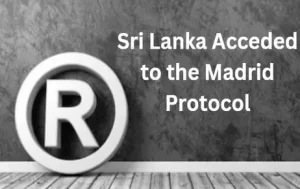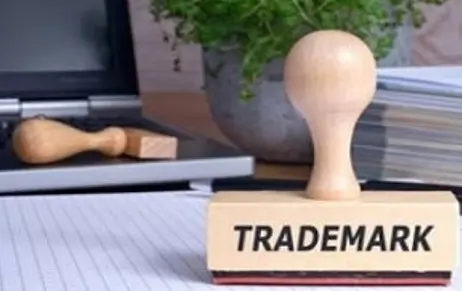TRADEMARK A trademark is something that we encounter on a regular basis. It is the…
Sri Lanka Acceded to the Madrid Protocol
Sri Lanka, in 2017, made significant policy decisions through concerted discussions on the importance of “value-added” products to enhance the revenue through exports in Sri Lanka. ‘Branding’ is one of the major value additions but has not received its due recognition and importance. Protecting the brands implies registering the requisite trademarks. Trademarks provide the required protection and safeguards against copying the brands. In order to increase exporting, the exporters will have to register their trademarks with the domestic as well as international country. Registering in different countries separately can be costly and time-consuming. Keeping this issue in consideration, the Sri Lankan government decided to accede to the Madrid Protocol.

Why accede to the Protocol?
- Increase in the trademark demand: The Sri Lankan businesses have been developed and the demand for trademark registrations has increased in the domestic and international market.
- Benefit by accession: The protocol makes the procedure of registration less expensive, less time consuming, fast and predictable. It ensures that the international applications from all the members are processed within 1.5 years. However, it is reiterated that the protocol has no effect on domestic applications.
- Compel the domestic authority to make changes: The first step of ensuring registration through the ‘Madrid Protocol’ is registration of the trademark in domestic country. The National Intellectual Property Office, Sri Lanka takes around three to five years to process a particular application and a failure to rectify this problem has caused problems in ensuring an effective accession to the protocol. Like the protocol provides a 1.5 years limit for registration, there is no such time limit on domestic application. The inconsistency can lead to prioritizing foreign applications over the domestic ones.
Registering trademarks in Sri Lanka is a cumbersome task. The organization in the country does not have its own online trademark search facility in place. The existing website does not provide requisite and sufficient information related to trademark related processes. Therefore, in order to ensure that there are no conflicting marks, the applicants have to send their representatives to the NIPO office. The representatives then check the register for any deceptively similar marks and ensure that the applicant’s mark cannot be opposed in the future. This makes the entire process of registering trademarks in the country becomes inefficient.
The trademark application process in Sri Lanka is also time-consuming. According to feedback from private sector firms, it takes on average 3 – 5 years to register a trademark in Sri Lanka. Yet, at times, it could take even 8 – 10 years to secure the registration. It is estimated by experts that for every 100 applications in Sri Lanka, 14 are registered with NIPO.
Accession to the Protocol
The decision to accede to the Madrid Protocol has been a debate for the past 3 to 4 years in Sri Lanka. While the country had agreed to accede to the Madrid protocol in 2017, for unknown reasons it was pushed to 2018 and further again to 2020. Finally, they have agreed to accede to the Madrid Protocol by mid-2020. As on February 23, 2020, according to news report, the Government of Sri Lanka has finally given their nod for Sri Lanka to accede to the Madrid Protocol. At present, the necessary amendments have been made to the present laws to facilitate Sri Lanka’s entry into the Madrid protocol. The draft is currently being reviewed and will then be submitted to WIPO for approval followed by the subsequent admission into the Madrid System.
Post-Madrid surge
The experience of countries that have acceded to the Madrid Protocol indicates that the relative ease of registering trademarks under the Protocol leads to an initial surge in foreign trademark applications received by acceding countries. For example, compared to the five years prior to accession, during the immediate five years post-accession, the number of annual foreign applications received by Vietnam’s IP office increased by 83%, Philippines by 51% and Turkey’s by 76%. This possibility poses a significant challenge for Sri Lanka. After accession to ‘Madrid’, NIPO is likely to experience a surge in foreign applications. At the same time, the organization will be under pressure to reduce the time it takes to process these applications from the current 3 – 5 years to a fixed short period of 1.5 years. Under the current working conditions, this requirement can lead to a situation where foreign applications get prioritized over local applications.
Hence, there is a risk of further delays in the time taken to process local applications. This in turn will further widen the gap between the number of local applications and registrations each year. The government will have to ensure that the procedural as well as substantive rules are such that make the process effective and efficient.
Conclusion
Accession to Madrid Protocol has its own benefits and disadvantages. The advantages are primarily for the trademark applicants because it is a time and cost saving method of registering the marks and names in various countries at once. However, although the countries receive a huge number of applications as well, they must make the requisite changes to meet the needs and wants of the applicants from all the countries across the world. It fairly becomes difficult for the country because the applicants need the rules in an international country according to their own domestic rules. Therefore, Sri Lanka, still being in the nascent stage of accepting the applications through the Madrid protocol, it still has to figure out the new rules and regulations that can be in favor of its international commitments.
Author: Tanya Saraswat – a student at School of Law, Narsee Monjee Institute of Management Studies, in case of any queries please contact/write back to us via email [email protected] or at Khurana & Khurana, Advocates and IP Attorney.



